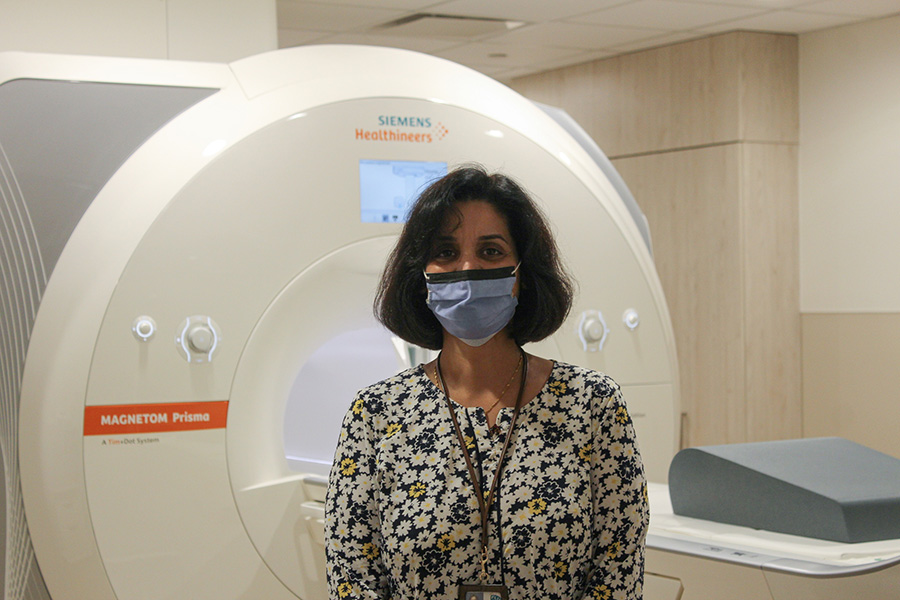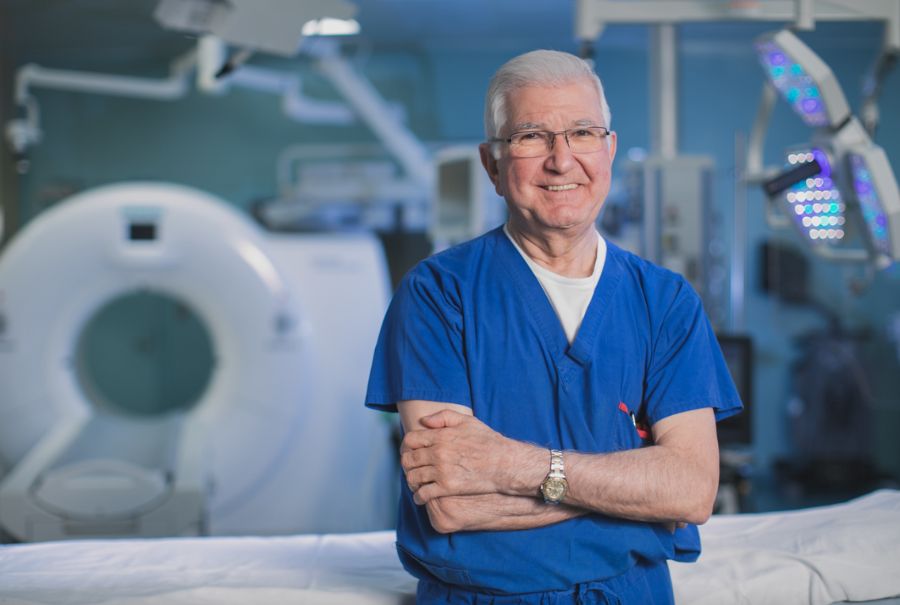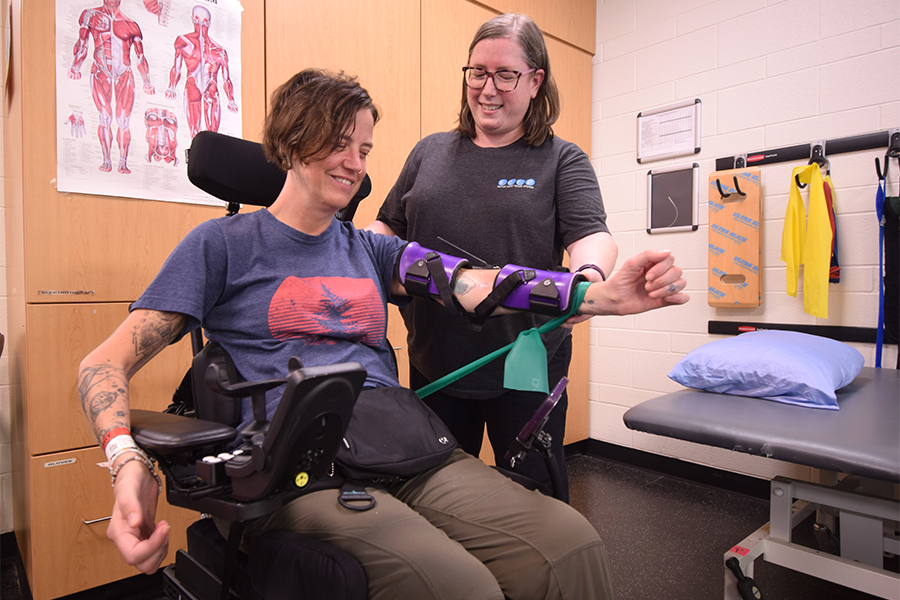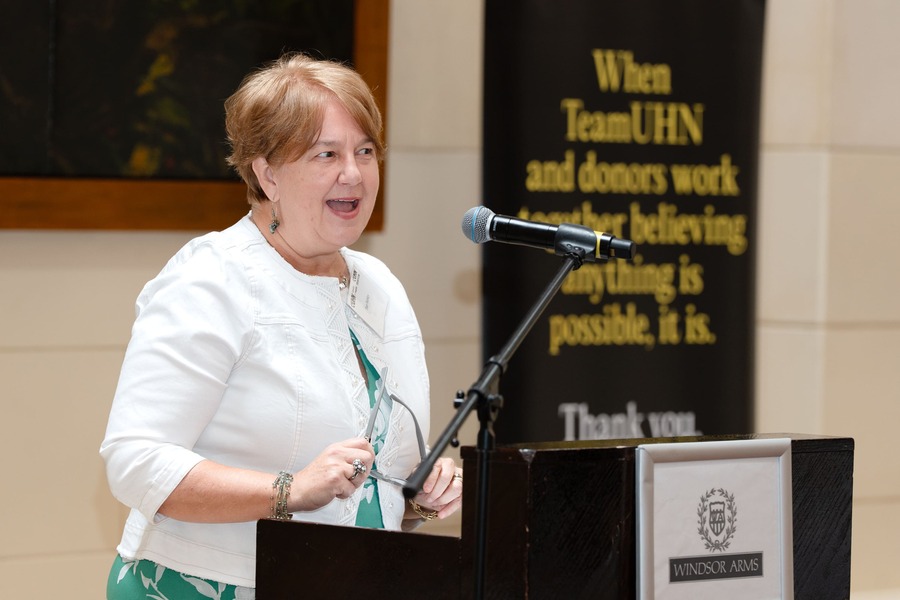In 2019, Brennan Gault completed his training to become a medical radiation technologist (MRT). Just six months later, he was conducting portable X-ray scans on COVID-19 patients in Toronto General Hospital’s ICU. (Photo: UHN)
In 2020, and at the height of the pandemic, Brennan Gault was unexpectedly thrust into conducting portable X-ray scans on COVID-positive patients at Toronto General Hospital’s Intensive Care Unit (ICU).
Just six months prior, Brennan completed his training to become a medical radiation technologist (MRT) and was hired by the Joint Department of Medical Imaging (JDMI) in Toronto.
“We do repeated chest X-rays on COVID patients to track their progress – see the inflammation and fluid in their lungs,” says Brennan. “I saw a lot of COVID patients in really rough shape.
“I helped move some patients who were unable to move themselves. Others were on extracorporeal membrane oxygenation (ECMO) – machines that are used to pump and oxygenate a person’s blood outside of the body when the patient’s lungs can’t provide this job anymore – it was tough to see.”
The pandemic created a steep learning curve for Brennan.
“Being a new graduate, I felt even more pressure to perform at an even higher level right away,” he says.
But for Brennan, it’s a rewarding job that’s all about being there for his patients – whether it’s in the ICU, the fracture clinic or on the operating table.
“I love being part of a team and a job that positively impacts people’s lives,” Brennan says.
“Sometimes patients remember me. I’ll see a patient in pre-op, during surgery, and post-op – it’s incredible to see the results of what we do here at UHN.”
November 7 to 13 is Medical Radiation Technologists’ Week – an annual celebration that recognizes the critical role that MRTs play in the healthcare system.
“Daily clinical imaging is a true team effort,” says Dr. Bernd Wintersperger, Director of MRI Operations at JDMI. “We as radiologists rely heavily on our technologist colleagues as they are critical in obtaining the images we need for diagnosis.”

In 2020, almost 850,000 imaging exams were performed across the JDMI, which includes Toronto General Hospital, Toronto Western Hospital, Princess Margaret Cancer Centre, Sinai Health System, Women’s College Hospital and Toronto Rehab.
MRTs can be found in General X-Ray, Computed Tomography (CT), Medical Resonance Imaging (MRI), Nuclear Medicine, Interventional Radiology and Diagnostic Medical Sonography.
JDMI employs over 250 MRTs – more than any other imaging department in Canada – including Asma Naheed. Asma has been an MRI technologist at JDMI for 15 years. She provides essential MRIs to approximately eight patients per day.
“My goal is to make the patient feel as comfortable as possible,” Asma says. “I really just try and slow down, remain calm, explain each step of the procedure to them – talk to them while they are in the scanner.”
Whether easing a claustrophobic patient’s fear of the MRI process or assisting a patient with Parkinson’s disease receive treatment for essential tremors, no two patients are alike.
“We are scanning and treating patients at the same time,” says Asma. “Sometimes patients come in with shaky hands and they struggle to draw a circle. After treatment, they can draw the circle. They can sign their name.
“Watching how excited patients get is the best feeling. I love being part of their care team.”


